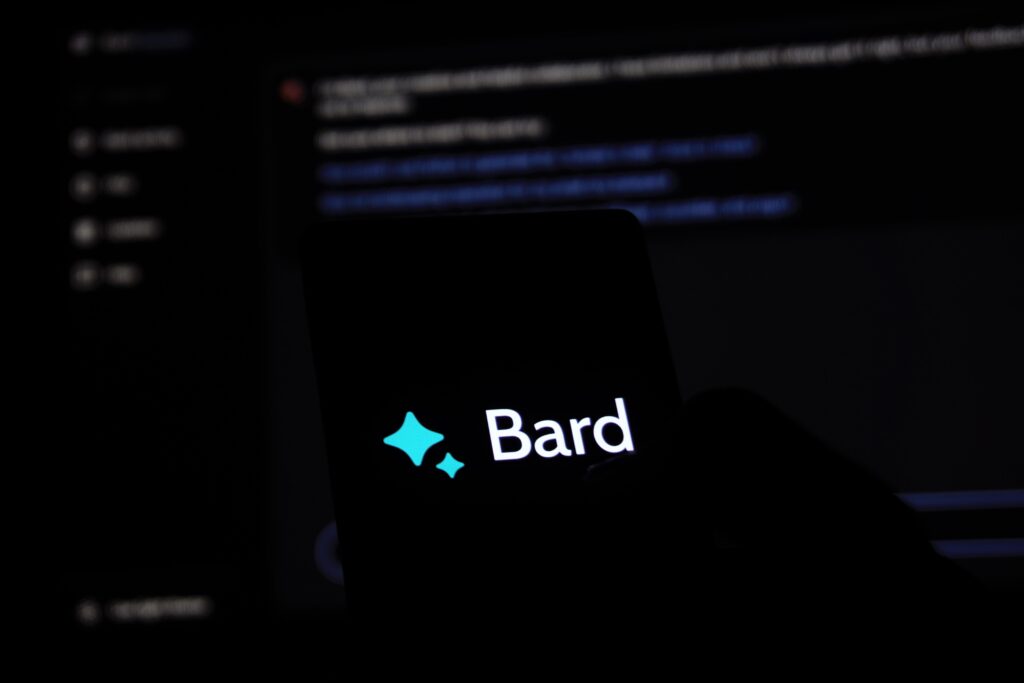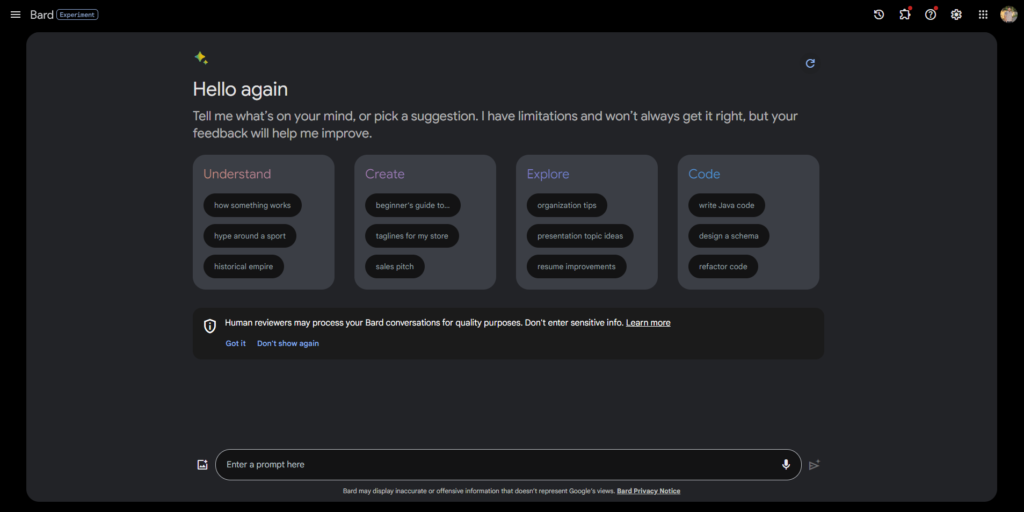Google Bard is an advanced conversational generative artificial intelligence chatbot developed by Google AI. It was initially built on the foundation of the LaMDA family of large language models (LLMs) and later transitioned to the PaLM LLM. Designed as a response to the emergence of OpenAI’s ChatGPT, Google Bard made its limited debut in March 2023, receiving mixed feedback initially before expanding its availability to additional countries in May.
The development of Bard commenced in 2021, driven by the objective of creating a more sophisticated and user-friendly language model than LaMDA. Google AI researchers set out to craft a language model capable of delivering highly accurate and fluent responses to natural language queries. Furthermore, they aimed to develop a model with the versatility to generate various creative text formats, such as poems, code, scripts, musical compositions, emails, letters, and more, all while adhering to user instructions.
To achieve these ambitious goals, Google AI researchers embarked on an extensive training process for Bard. They leveraged a vast data set comprising text and code from sources like books, articles, code repositories, and other publicly accessible data. Additionally, they employed reinforcement learning techniques to enhance Bard’s ability to provide comprehensive and informative responses.
Bard was officially introduced to the public on February 6, 2023, through a blog post authored by Google and Alphabet CEO Sundar Pichai. Pichai characterized Bard as “a new AI experiment designed to generate diverse creative text formats, including poems, code, scripts, musical pieces, emails, letters, and more, while striving to fulfill all your requirements.”
On March 21, 2023, Bard was released to a select group of “trusted testers,” and by May 10, 2023, Google expanded its accessibility to users in over 180 countries and territories.

How Google Bard Operates:
Google Bard functions as a large language model, having been trained on an extensive dataset of text and code. This data set encompasses a wide array of sources, including books, articles, code repositories, and other publicly available materials.
Bard’s ability to understand and respond to natural language queries is grounded in its exposure to diverse linguistic patterns within this extensive dataset. When a user poses a question to Bard, the model undertakes a two-step process. First, it comprehends the question’s meaning by analyzing the words, phrases, and contextual cues. Then, it generates a response that aims to be both informative and comprehensive.
One of Bard’s distinctive features is its capacity to generate creative text formats. To accomplish this, Bard employs its knowledge of language and human language patterns to craft text that is not only imaginative but also grammatically correct.

Benefits of Google Bard:
Google Bard offers a range of advantages:
- Enhanced Natural Language Understanding: Bard excels in comprehending and responding to natural language queries more accurately and fluently compared to earlier language models.
- Versatile Content Generation: Bard’s ability to generate various creative text formats, including poems, code, scripts, musical compositions, emails, and letters, following user instructions, is a significant asset.
- Constant Development: While still in development, Bard has already demonstrated proficiency in numerous tasks, such as providing information on diverse topics, offering comprehensive answers, and creating various types of creative textual content.
- Global Accessibility: Bard has expanded its accessibility to users in over 180 countries and territories.
Limitations of Google Bard:
Google Bard, like any evolving technology, has its limitations:
- Occasional Inaccuracy: There may be instances where Bard generates inaccurate or misleading information.
- Bias Concerns: Bard’s responses can reflect biases present in the data it was trained on.
- Complex Task Handling: Bard may struggle when confronted with complex tasks or multifaceted queries.
- Development Stage: It is crucial to remember that Bard is still undergoing development, and its capabilities may evolve over time.
In March 2023, Google published a research paper outlining Bard’s development in the scientific journal Nature. In April 2023, it was announced that Bard would be integrated into Google Search, enabling users to ask questions directly from the search bar. Furthermore, in May 2023, Google revealed plans to integrate Bard with Google Assistant, allowing users to interact with Bard using voice commands.
Google continues to actively develop Bard, and its potential for becoming even more powerful and versatile in the future is promising. The emergence of Bard marks an exciting era in the field of artificial intelligence, with significant implications for various applications and user interactions.
